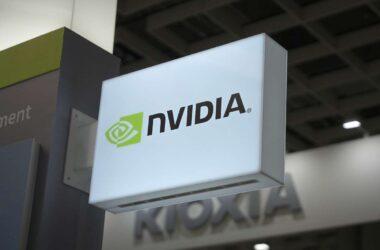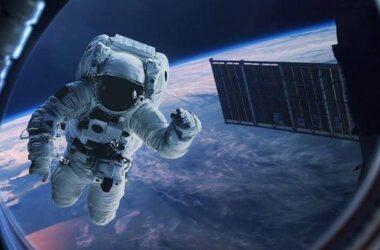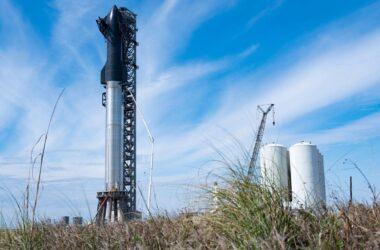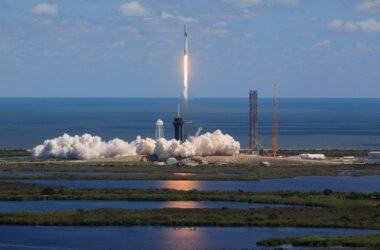The International Space Station (ISS) is a large spacecraft in orbit around Earth. It is a multinational collaborative project involving five participating space agencies: NASA (United States), Roscosmos (Russia), JAXA (Japan), ESA (Europe), and CSA (Canada).
The ISS serves as a microgravity and space environment research laboratory in which crews conduct experiments in biology, human biology, physics, astronomy, meteorology, and other fields. The station is suited for the testing of spacecraft systems and equipment required for possible future long-duration missions to the Moon and Mars.
The ISS was first launched in 1998 and has been continuously inhabited since November 2000. It is the largest artificial object in orbit and can be seen with the naked eye from Earth. The station orbits Earth at an average altitude of 250 miles (400 kilometers) and travels at a speed of 17,500 miles per hour (28,000 kilometers per hour). It takes the ISS about 90 minutes to orbit Earth.
Historical Background
The idea of an international space station can be traced back to the 1980s when both the United States and the Soviet Union separately considered the concept. The U.S. proposed a space station called Freedom, while the Soviet Union envisioned the Mir-2 station. As tensions between the two superpowers eased with the end of the Cold War, discussions on collaboration began.
In 1993, U.S. President Bill Clinton announced a new direction for the U.S. space program, which involved merging the U.S. Freedom station with Russia’s Mir-2 project. This marked the beginning of international cooperation on a shared space station. The project was renamed the International Space Station, and agreements were made between the participating countries.

Structure and Components of the ISS
A modular space station in low Earth orbit is called the International Space Station (ISS). It functions as a multilateral effort in which the United States, Russia, Europe, Japan, and Canada all collaborate. A distinctive platform for interdisciplinary research, technical advancement, and international collaboration in space exploration is offered by the ISS. The ISS’s primary parts and structures are listed below:
- Zarya (Functional Cargo Block): In 1998, Russia launched its first spacecraft, also known as the Functional Cargo Block (FGB) or Zarya. It supplies electrical power, storage, and propulsion capabilities while acting as the ISS’s initial propulsion and control module.
- Unity (Node 1): Unity, also known as Node 1, was launched by the United States in 1998. It serves as a connecting hub for various modules and is used for crew living quarters, life support systems, and communication equipment.
- Zvezda (Service Module): Zvezda, the Service Module, was launched by Russia in 2000. It provides living quarters, life support systems, control systems, and propulsion for the Russian segment of the ISS.
- Destiny (U.S. Laboratory Module): Destiny is the primary research laboratory of the ISS and was launched by the United States in 2001. It contains various research equipment and is used for conducting scientific experiments.
- Columbus (European Laboratory Module): Columbus, provided by the European Space Agency (ESA), was launched in 2008. It is a multidisciplinary laboratory used for conducting experiments in biology, physics, and fluid dynamics, among other fields.
- Kibo (Japanese Experiment Module): Kibo, provided by the Japan Aerospace Exploration Agency (JAXA), consists of several components launched in multiple missions from 2008 to 2009. It includes a pressurized laboratory, an exposed facility for experiments in the vacuum of space, and a logistics module for storage and resupply.
- Tranquility (Node 3): Tranquility, also known as Node 3, was launched by the United States in 2010. It contains life support systems, exercise equipment, and the Cupola—a panoramic window module used for Earth observations.
- Harmony (Node 2): Harmony, also known as Node 2, was launched by the United States in 2007. It serves as a connecting node for the U.S. segment of the ISS and provides docking ports for visiting spacecraft.
- Various other modules and components: The ISS has additional modules and components that include the Russian Mini-Research Modules (MRMs), the Mobile Servicing System (Canadarm2), the Japanese Experiment Logistics Module, and external trusses and solar arrays for power generation.
These modules and components are interconnected through a system of hatches, docking ports, and pressurized tunnels, allowing crew members to move between different sections of the station. The ISS is continuously evolving through additional launches and assembly missions to expand its capabilities and support ongoing scientific research in microgravity.

Research and Scientific Contributions of the ISS
The International Space Station (ISS) has been a remarkable platform for scientific research since its inception. Numerous experiments and studies conducted on the ISS have contributed to a wide range of scientific fields. Here are some notable research areas and scientific contributions of the ISS:
- Microgravity Research: The microgravity environment of the ISS has been instrumental in advancing our understanding of various phenomena. Researchers have conducted experiments on fluid dynamics, combustion, and crystal growth, among others, in microgravity conditions. These studies have provided insights into fundamental physics and led to improvements in various industrial processes.
- Human Physiology and Medicine: The ISS has been crucial in studying the effects of long-duration space travel on the human body. Astronauts serve as subjects for experiments exploring bone loss, muscle atrophy, cardiovascular changes, immune system response, and other physiological adaptations. The findings have implications not only for space exploration but also for understanding and treating health conditions on Earth.
- Space Biology: The ISS has facilitated research on the effects of space radiation and microgravity on living organisms. Scientists have investigated plant growth, seed germination, cellular biology, and genetic changes in space. These studies enhance our understanding of life’s fundamental processes and have potential applications in agriculture, biotechnology, and medicine.
- Earth Observation: The ISS provides a unique vantage point for Earth observation. Astronauts capture images and data to monitor natural disasters, climate patterns, land use changes, and other Earth-related phenomena. This data contributes to environmental monitoring, disaster response, and climate research.
- Astrophysics and Cosmology: The ISS has been utilized for studying astronomical phenomena from space. Instruments installed on the ISS have observed cosmic rays, antimatter, dark matter, and conducted experiments to investigate the origins of the universe. These observations have helped refine theories in astrophysics and cosmology.
- Technology Development: The ISS serves as a testbed for various technologies that are crucial for space exploration. This includes robotics, spacecraft docking systems, life support systems, and advanced materials. Research and experiments conducted on the ISS contribute to the development of safer, more efficient, and reliable space technologies.
- Education and Outreach: The ISS has inspired countless students and researchers worldwide. The educational programs associated with the ISS engage students in scientific experiments and provide opportunities for hands-on learning. Additionally, the live broadcasts and public engagement activities conducted from the ISS have generated interest and enthusiasm for space exploration and scientific discovery.
These are just a few examples of the wide range of research and scientific contributions made possible by the ISS. Over the years, the ISS has proven to be an invaluable platform for advancing scientific knowledge, pushing the boundaries of human exploration, and fostering international collaboration in space research.

Technological Innovations and Spin-Offs
The International Space Station (ISS) has been a platform for various technological advancements and research initiatives. I can provide you with some examples of technological advancements that have been developed or utilized on the ISS.
- Water Filtration Systems: The ISS has advanced water filtration systems that enable the recycling and purification of water. These systems use processes such as distillation, ion exchange, and filtration to remove contaminants and make the water safe for drinking and other uses.
- Advanced Life Support Systems: The ISS has contributed to the development of advanced life support systems that ensure the astronauts have a sustainable environment for long-duration space missions. These systems involve the management of air quality, temperature, humidity, and waste recycling to support crew health and well-being.
- Robotics and Autonomous Systems: The ISS has served as a testbed for robotic technologies and autonomous systems. Robotic arms, such as the Canadarm2 and Dextre, have been used for various maintenance and assembly tasks on the ISS. These robots have paved the way for advancements in space-based robotics and autonomous operations.
Astronauts and Human Spaceflight
Astronauts play a crucial role in human spaceflight and the operation of the ISS. They are selected and trained by their respective space agencies to live and work in space for extended periods. Here are some key points regarding astronauts and human spaceflight for the ISS:
- Astronaut Selection: The selection process involves rigorous physical and psychological evaluations, as well as assessments of technical skills, problem-solving abilities, and teamwork aptitude. Candidates usually undergo extensive training programs to prepare them for the challenges of space travel and life on the ISS.
- Training: Astronaut training for ISS missions is comprehensive and covers a wide range of topics. It includes physical fitness training, medical training, spacecraft systems and operations, extravehicular activities (spacewalks), robotics, scientific experimentation, emergency procedures, and more. The training is conducted by the space agencies and often involves simulations, classroom instruction, practical exercises, and hands-on experience with the equipment and systems used on the ISS.
- Mission Duration and Rotations: ISS missions typically have varying durations, ranging from a few months to one year or more. The length of a mission depends on factors such as the objectives of the mission, crew availability, and logistical considerations. Astronauts are typically assigned to specific missions based on their training, experience, and expertise. There is a rotation schedule in place to ensure a continuous human presence on the ISS, with crew members regularly being replaced and returning to Earth.
- Roles and Responsibilities: Aboard the ISS, astronauts have various roles and responsibilities. They perform scientific experiments and research in areas such as biology, physics, chemistry, and astronomy. They also maintain and repair the station’s systems, including life support, power, communications, and guidance. Astronauts participate in spacewalks to conduct repairs, install new equipment, or perform experiments outside the station. Additionally, they document their activities, communicate with mission control centers, and engage in outreach and educational activities to promote space exploration.
- Challenges and Risks: Human spaceflight, including missions to the ISS, comes with inherent challenges and risks. Microgravity affects the human body, leading to bone and muscle loss, cardiovascular changes, and alterations in the immune system. Astronauts must undergo physical exercises and medical monitoring to mitigate these effects. Other risks include radiation exposure, psychological stress, and the potential for equipment malfunctions or emergencies. Robust safety protocols and redundant systems are in place to minimize these risks and ensure the well-being of astronauts on the ISS.
Overall, the ISS’s importance lies in its contributions to scientific research, human spaceflight capabilities, international collaboration, technological advancements, infrastructure development, and its role as a symbol of exploration and inspiration. It represents a significant milestone in humanity’s quest to explore and understand space.






